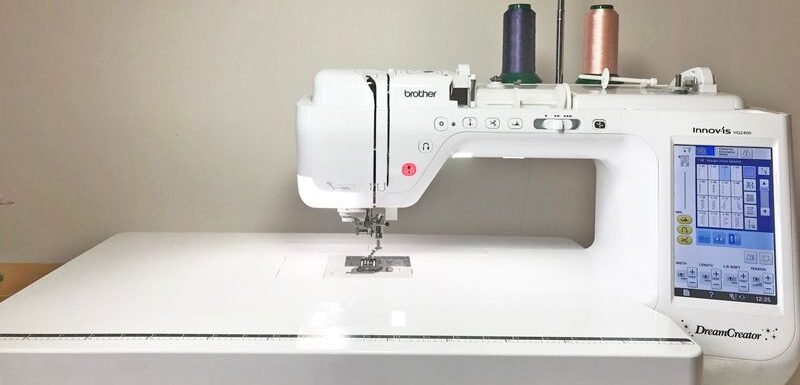Unlock your quilting creativity with our comprehensive guide to the best quilting machines for beginners. Learn about different features, top picks, and FAQ to make the best choice.
Starting a new hobby like quilting is exciting but can also be overwhelming when it comes to choosing the right tools. As a beginner, the first step on your quilting journey is choosing the right machine.
This guide explores what makes a machine a ‘quilting’ machine, key things to consider when making your first purchase, and three of the best quilting machines for beginners available today to help you in your quest.
Best Quilting Machines for Beginners
- Sewing Machine vs. Quilting Machine: Understanding the Difference
- Computerised or Mechanical: Which to Choose?
- Our Top 3 Picks: Best Quilting Machines for Beginners
- Key Features to Consider When Purchasing Your First Quilting Machine
- FAQ: Questions Beginner Quilters Ask
- Best Quilting Machines for Beginners: Conclusion
- Related Posts
Affiliate Disclosure: Some of the links on this site are affiliate links. This means I may receive a small commission (at no further expense to you) if you click through and make a purchase. ThreadSketchingInAction.com is a participant in the Amazon Services LLC Associates Program, an affiliate advertising program designed to provide a means for sites to earn commission fees by advertising and linking to Amazon.com.
Sewing Machine vs. Quilting Machine: Understanding the Difference
A common question among quilting beginners is: How does a quilting machine differ from a regular sewing machine?
While sewing and quilting machines can perform similar functions, they are not entirely the same.
A quilting machine is specifically designed to handle thicker fabric and stitch through multiple layers simultaneously. It often has a wider throat and larger sewing bed to accommodate bulky quilts and often includes specific accessories geared towards quilting.
Quilting machines usually also include additional features and accessories, such as flat bed extension tables and multiple options for free motion stitching.
Of course, many regular domestic sewing machines also have some of these features, too.
Then of course, there are professional quilting machines, such as sit-down and longarm machines. But for the purposes of this guide, the focus is on the best quilting machines for beginners to use at home.
Let’s explore some of the additional accessories and features found on quilting machines designed for home use.
Large Workspace and Flatbed Extension Table
Quilting machines typically have a larger workspace, with the throat size ranging from 6″ to 11″. This is in contrast to the 6″ space on regular domestic machines.
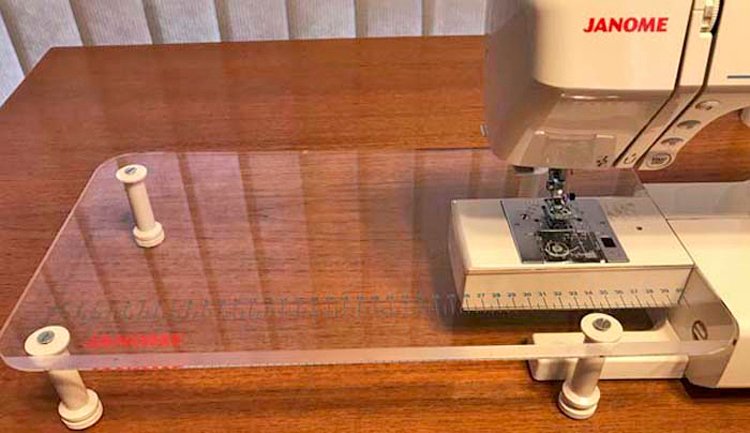
Quilts are bulky items to stitch, so a flatbed extension table is also desirable. Many quilting machines (even entry level) offer these as an included or optional extra.
This additional space makes handling and stitching a large quilt a more enjoyable experience.
Free motion Stitching Foot
The free motion foot, also known as a Darning foot, is essential if you want to do any free motion stitching on your quilt or other projects.
Several different types of free motion feet are available, including the most commonly-used:
- Open toe (or C) foot – also known as a Hopping foot
- Closed toe (or O) foot
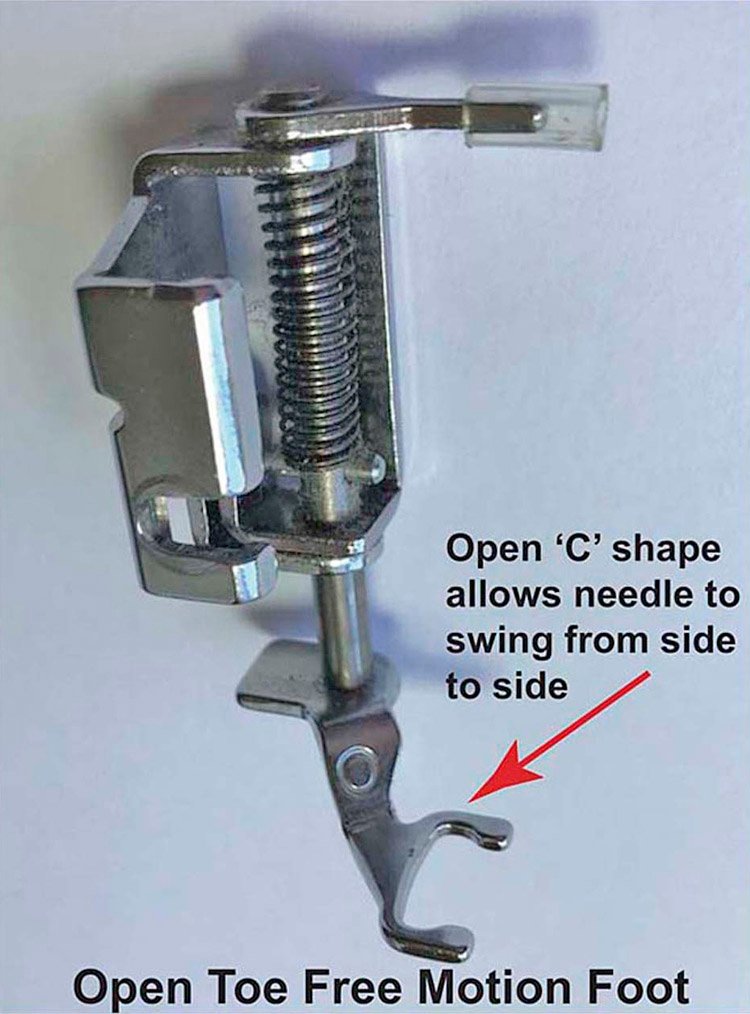
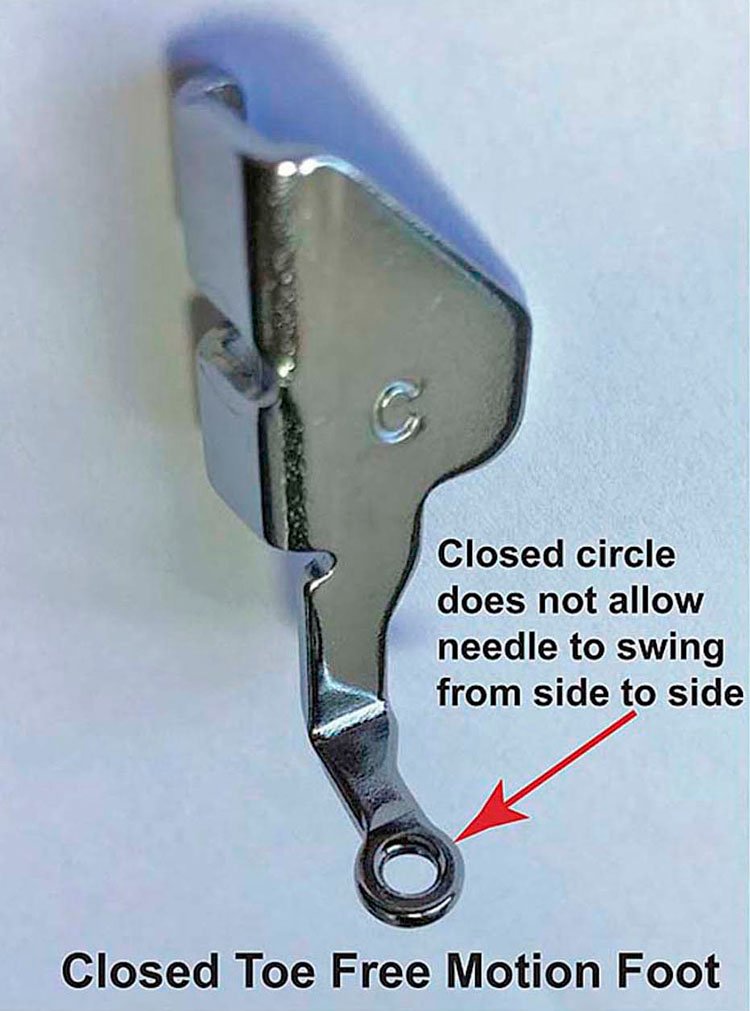
If this is your first time experimenting with freestyle stitching, the Open toe foot is the easiest to use as it allows a clear view of what you’re working on.
All quilting machines should, in my opinion, include at least one open toe foot. Make sure that the quilting machine you buy has a free motion foot included in the accessories.
What if a free motion foot is not included? Don’t despair! Inexpensive free motion presser feet are readily available to suit most brands of sewing machine.
Ability to drop the feed dogs
In order to do free motion stitching, you need to be able to lower the feed dogs on your machine using a mechanical switch or electronic touchpad.
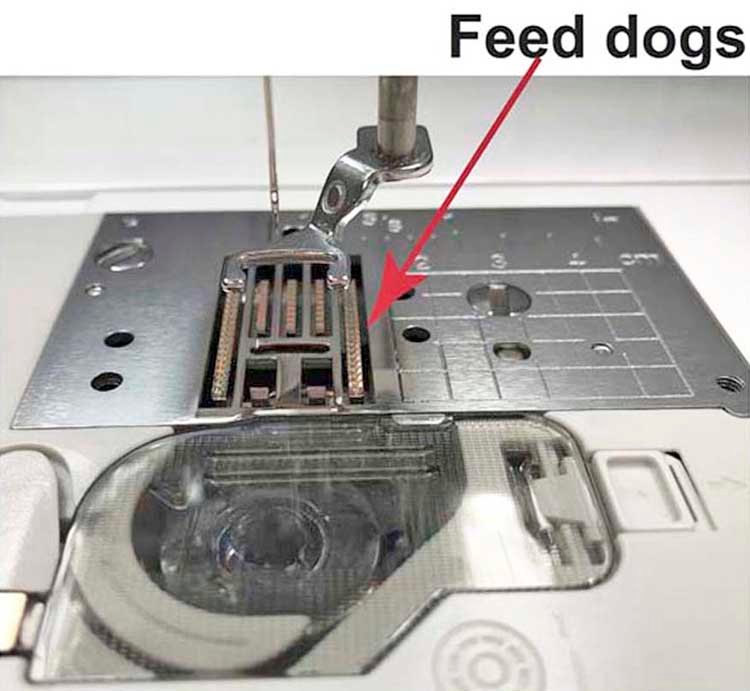
The feed dogs are the little metal ‘teeth’ below the stitching plate (under the needle). Lowering them prevents them from gripping and advancing the fabric as you’d expect for normal sewing.
While it is possible to work free motion with the feed dogs engaged (and some people prefer it), I think free motion stitching is much easier when your freedom of movement is unrestricted.
Walking Foot
The walking foot is a large presser foot that grips the top layer of fabric as it feeds through the machine, simultaneously keeping all the layers stable as you stitch.
Quarter Inch Foot
Designed to help you stitch narrow seam allowances accurately, the quarter inch foot will make piecing quilts a breeze.
I’m a beginner – do I really need a quilting machine?
Many people make stunning quilts using regular sewing machines, so how do you choose?
Budget
This is an important consideration when starting out. Most newcomers to quilting don’t want to outlay large amounts for a quilting machine.
Investing in a domestic machine is fine, provided the features required for quilting are included or available to purchase separately — i.e. a free motion foot, walking foot, quarter inch foot, and the ability to lower the feed dogs.
You could manage without an extension table; however, many domestic machines do include them now. Check out the Janome range of sewing and quilting machines.
Project size
Manoeuvring a large quilt through a regular sewing machine is tricky, although not impossible. However, if you dream of making a collection of king size bed quilts, consider investing in a machine with a larger throat size and work space.
Available space
Domestic sewing machines are compact, usually lightweight, and are easily stored in a cupboard when not in use.
Quilting machines are a bit larger, and usually heavier. So if you have limited space, the size of the machine is something to consider.
Computerised or Mechanical: Which to Choose?
When selecting a quilting machine, the choice often comes down to computerised or mechanical.
While a computerised quilting machine may seem intimidating, many are designed to be user-friendly and can actually make the learning process easier.
Computerised Machines
Computerised machines often come with automatic features and a variety of preset stitches that can be selected with a button on a touchpad. They’re ideal if you want the added convenience of 21st-century features.
Mechanical Machines
Mechanical machines, on the other hand, offer a hands-on experience, perfect for those who enjoy traditional sewing methods. They’re reliable, durable, and less dependent on electronic components. Furthermore, mechanical machines are usually less costly than computerized machines.
The choice boils down to your personal preferences, budget, and the complexity of your quilting projects.
Our Top 3 Picks: Best Quilting Machines for Beginners
Quilting is a craft that combines creativity and precision. A quilting machine can simplify the process, especially for beginners. It ensures the neat, uniform stitches required for traditional quilting while offering the creative freedom to explore free-motion stitching techniques and art quilting.
With a variety of beginner-friendly quilting machines available — including domestic machines that have the additional features required for quilting — you can find one that suits your budget and meets your needs.
Brother CS7000x
PROS: The Brother CS7000x is a user-friendly, and popular computerised machine with 70 built-in stitches, 10 presser feet, a wide table and protective hard case, an automatic needle threader, plus a needle Up/Down function.
The machine is lightweight and portable, offering an affordable choice for those just starting their quilting journey.
CONS: It has a limited variety of stitches.
OVERVIEW: The Brother CS7000X is a great entry-level, budget-friendly machine if you’re new to quilting. The machine’s portability, lightweight, and protective cover make it ideal for travelling or taking to quilting classes.
Specifications
- Dimensions: 6.65″D x 16.26″W x 12.21″H
- Colour: White
- Weight: 14 pounds
- Wide extension table
- 10 included presser feet
- 70 built-in stitches
CHECK TODAY’S BEST DEALS
Janome Memory Craft MC6650 Sewing & Quilting Machine
PROS: The Janome Memory Craft MC6650 Sewing and Quilting Machine features a larger-than-normal throat and workspace, extension table, a built-in thread cutter and needle threader, a stitch speed function, a memorised needle up/down, and 12 included presser feet.
It’s perfect for quilters ready to tackle either simple or complex projects.
CONS: Fewer features than some higher-end Janome models.
OVERVIEW: If you have a slightly larger budget, the Janome Memory Craft Sewing and Quilting Machine is a perfect machine for quilters — whether you’re new to the craft or have years of experience. It’s the type of machine that you can happily use for many years, as your skills develop.
Specifications
- Dimensions: 23.9″D x 13.43″W x 11.54″H
- Colour: White and Red
- Weight: 24.25 pounds
- Wide extension table
- Larger throat size
- 12 included presser feet
- Automatic thread cutter
- Speed control slider
Check Today’s best deals
SINGER Quantum Stylist 9960 Computerised Sewing Machine
PROS: The Singer Quantum Stylist 9960 is an impressive and sturdy machine featuring 600 built-in stitches, open-toe free motion foot, walking foot, extension table, and more!
CONS: Some people report having problems with the bobbin winder.
OVERVIEW: The Singer Quantum Stylist 9960 is a great machine for beginners who want a machine that will grow with them.
SPECIFICATIONS
- Dimensions: 8.25″D x 17.25″W x 12″H
- Colour: White
- Weight: 20 pounds
- Material: Metal
- Wide extension table
- 600 built-in stitches
- Open toe free motion presser foot
- Walking foot for quilting
CHECK TODAY’S BEST PRICES
Key Features to Consider When Purchasing Your First Quilting Machine
Ease of Use
As a beginner, you need a quilting machine that is easy to set up, thread, and use. Look for models with clear instructions and user-friendly design.
Workspace Size
Quilting often requires more space than regular sewing, so opt for machines that offer an extended or expandable work area.
Built-in Stitches
Machines with a variety of built-in stitches provide more options for creativity and complexity in your quilting projects.
Free Motion Presser Foot
Always look for a machine that includes at least one free motion presser foot, and the ability to drop the feed dogs. Some regular sewing machines offer the free motion foot as an optional extra. Inexpensive open-toe free motion feet are available for most sewing machine brands.
Budget
Determine your budget before shopping. The price of quilting machines can vary significantly.
While investing in a top-of-the-range machine may be appealing for long-term use, there are plenty of affordable options that offer excellent features for beginners.
Power and Stability
Ensure the machine can handle multiple layers of fabric and stays stable during the quilting process.
Brand Reputation
Buying a machine from a reputable brand ensures you get a reliable, high-quality product with good customer service.
Accessories
Extra accessories like additional presser feet, extension tables, and quilting guides can add value to your purchase and make your quilting process smoother.
FAQ: Questions Beginner Quilters Ask
Do I need a special machine for quilting?
While a regular sewing machine can be used for quilting, a dedicated quilting machine provides specialised features for a more streamlined quilting experience. Make sure your machine has free motion stitching functionality.
How do I maintain my quilting machine?
Regular maintenance can prolong the life of your quilting machine and keep it in good working order.
This generally involves cleaning the machine after each project to remove lint and dust, oiling the machine (if necessary) by following the manufacturer’s instructions, changing needles regularly, and having the machine professionally serviced every one to two years.
Can I quilt with a regular sewing machine?
Yes, you can quilt with a standard sewing machine, especially for smaller projects or simple quilt designs. However, a quilting machine will offer more space and features specifically designed for quilting, making it a better option for larger or more complex projects.
If you want to invest in a regular sewing machine, make sure you can fit a walking foot for quilting, an open-toe free-motion foot, and be able to drop the feed dogs (a requirement for free-motion stitching).
Are there any good resources to learn quilting as a beginner?
There are plenty of resources to help you get started with quilting.
- Online platforms like YouTube offer a plethora of free tutorial videos.
- At the same time, many websites are dedicated to helping people learn different styles of quilting.
- You can also find many quilting books for beginners.
- Local quilting shops regularly run workshops, which can be a great way to learn and connect with a local community of quilters.
How much do the best quilting machines for beginners cost?
The cost of a quilting machine can vary widely based on the brand, features, and model. You can find decent beginner-friendly machines in the $200-$500 range.
Higher-end machines with more advanced features can cost over $1,000+. It’s important to balance your budget with your needs and aspirations as a quilter.
Best Quilting Machines for Beginners: Conclusion
Choosing a suitable quilting machine is a crucial step in your journey as a beginner quilter. The best quilting machines for beginners offer a balance of user-friendly features, a variety of accessories, and reliable performance.
By understanding the different options and considering the features that matter most to you, you’re well on your way to finding the perfect companion for your quilting journey.
